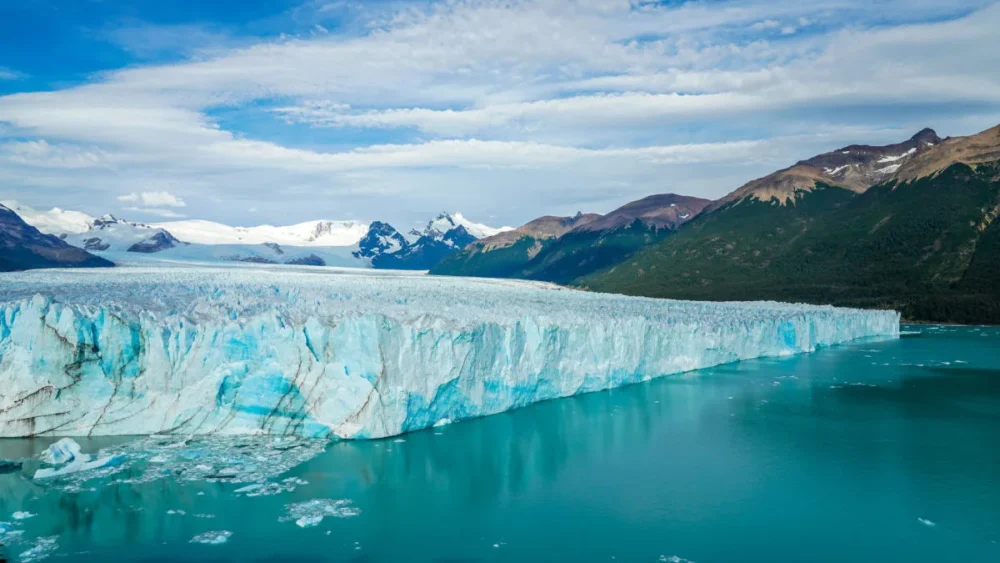ERECTING MASSIVE UNDERWATER BARRIERS AND TENTS TO ISOLATE GLACIERS FROM HOT WATER CURRENTS: CAN IT BE A SOLUTION TO COUNTER GLOBAL WARMING? THE UNIQUE PROPOSAL IS AT THE CENTER OF A DEBATE THAT DIVIDES THE SCIENTIFIC COMMUNITY IN TWO
Barriers and curtains “salvific”
Rising temperatures are causing the melting of glaciers and the related rise in ocean levels. At this rate, by 2100 the waters could rise by about one and a half meters, reaching nine meters in the next two centuries.
Some cities are at risk of being sunk, such as: New York, Los Angeles, Sydney, Dubai, Istanbul, Venice, Barcelona, Amsterdam and many others.
The scenario, disturbing to say the least, has been at the center of scientific debate for some time. But what are the new proposals? The latest in chronological order, that is barriers submarines and tents make most scholars turn up their noses.
Let’s start from the first bizarre proposal.
An underwater barrier “anti-erosion”
The description already sounds like the title of a film. In fact, the barrier we are talking about should protect the glacier Of Jakobshavnin Greenland, the one from which the iceberg that sank the Titanic in 1909 broke off.
To threaten Sermeq Kujalleq (name of the glacier in the local language), the warm water currents that flow three hundred meters deep. And here comes the first proposal: the construction of an underwater wall.
One hundred meters high, the barrier could become a sort of artificial extension of the ridge that already protrudes from the ocean floor. In practice, the wall could deflect warm currents and allow the ice to regenerate.
Creator of the singular proposal, John Moore, glaciologist AmericanUniversity of Laplandwho in 2018, together with his compatriot Michael Wolovickhad described the project in detail.
However, the proposal was discarded because it takes between ten and twenty years to complete the work: too late.
“Tent Call”: the second project
Another stratagem born from the minds of Moore and Wolovick is the “underwater curtain”.
What are we talking about?
According to the two scholars, an underwater tent one hundred meters high could be anchored to the seabed, made of natural fibers such as canvas, hemp and sisal (Agave sisalana). A solution “plastic free”.
Floating halfway between the depths and the surface, it could deflect currents. As for costs, estimates speak of an investment of no less than 500 million dollars.
«We absolutely don’t know if the’idea will work or not -, begins John Moore -. But I think it is “vital important” for scientists to explore, in case the polar ice caps start to “become unstable,” despite the best global efforts to reduce greenhouse gas emissions».
A themed conference
Moore presented the project through a series of lectures and workshops, including a memorable performance at Stanford University, California in December 2023.
In addition, he announced that experiments to bring this visionary proposal to life could begin in February 2024, in Greenland, with the involvement of collaborators fromUniversity of Cambridge in the United Kingdom.
Shaun Fitzgeraldcenter director and fluid mechanics engineer, Cambridge, who supports the project, revealed his intention to carry out an open-air experiment in the River Cam (England) by the end of 2024.
The test could test, on a concrete level, the challenges of fluid mechanics.
During the event, Fitzgerald clarified that the goal of the curtains is not to block the flow of hot water, but to reduce its flow rate. They are like plasters that certainly don’t solve the climate problem but help maintain the ice.
However, as in every investigation story, there are those who raise doubts and questions…
Supporters and detractors of barriers and tents: brainstorming
Several scientists, however, question the usefulness of the bold strategies of geoengineeringarguing that discussing barriers and tents, which cannot be achieved immediately, can divert attention from a much more serious and pressing problem.
Christian Schoofexpert in fluid dynamics of theUniversity of British Columbia of Vancouver (UBC), Canada, however stands in defense of the polar geoengineering.
For him, approaches such as seabed curtains are a “buffer measurement“, an attempt to buy time to address the root causes of climate change. «All geoengineering ideas are crazy until you consider what might happen if we do nothing», he declares.
But skeptics do not give up and dispute both the prohibitive costs and the feasibility “shaky.”
Long Moonglaciological del National Snow and Ice Data Center at Mass University, in Colorado, points the finger at feasibility. «It is extremely difficult to work in polar environments. Even the task of accessing these places, let alone undertaking major engineering activities there, becomes problematic».
As for the expense, Shaun Fitzgerald points out that the cost of the tents can be compared to the amount that countries would have to shell out to deal with rising sea levels, «we’re talking trillions of dollars“, points out.
The case becomes complicated when fears emerge about the “side effects”. Lars Smedsrudpolar oceanographer ofUniversity of Bergen (Norway), raises doubts about possible damage to the marine ecosystem. The curtain could, in fact, hinder the flow of nutrients between the glacier and the sea. A risk that Moore and his associates seem willing to take, however, in a bold attempt to save the ice caps.

